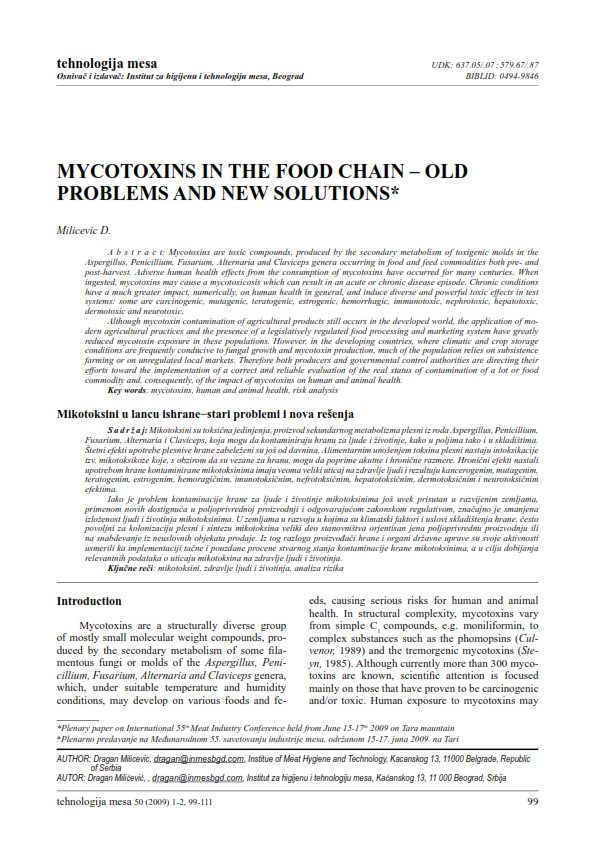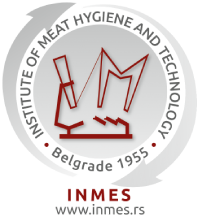MYCOTOXINS IN THE FOOD CHAIN – OLD PROBLEMS AND NEW SOLUTIONS
Abstract
Mycotoxins are toxic compounds, produced by the secondary metabolism of toxigenic molds in the Aspergillus, Penicillium, Fusarium, Alternaria and Claviceps genera occurring in food and feed commodities both pre- and post-harvest. Adverse human health effects from the consumption of mycotoxins have occurred for many centuries. When ingested, mycotoxins may cause a mycotoxicosis which can result in an acute or chronic disease episode. Chronic conditions have a much greater impact, numerically, on human health in general, and induce diverse and powerful toxic effects in test systems: some are carcinogenic, mutagenic, teratogenic, estrogenic, hemorrhagic, immunotoxic, nephrotoxic, hepatotoxic, der motoxic and neurotoxic. Although mycotoxin contamination of agricultural products still occurs in the developed world, the application of modern agricultural practices and the presence of a legislatively regulated food processing and marketing system have greatly reduced mycotoxin exposure in these populations. However, in the developing countries, where climatic and crop storage conditions are frequently conducive to fungal growth and mycotoxin production, much of the population relies on subsistence farming or on unregulated local markets. Therefore both producers and governmental control authorities are directing their efforts toward the implementation of a correct and reliable evaluation of the real status of contamination of a lot or food commodity and, consequently, of the impact of mycotoxins on human and animal health.





